Are you taking any trips this fall? It is a great time for those who want smaller crowds and cooler weather. If you are taking a trip, do you know how to pack your suitcase?
The Victorian era was a very interesting time for travel. Advances in transportation made it easier to go long distances and social evolutions encouraged men and women to interact in public more than ever before. In addition, women were venturing out on their own for essentially the first time. AND – it was a very prescriptive time. The appropriate dress and etiquette for traveling were well-publicized topics. How to pack a suitcase was also of interest.
There was a lot to consider when preparing for a long trip in the Victorian era. For one, women who could afford to travel had many delicate items in their wardrobe. And large ones. Here is some of the advice on how to get it all there in good shape, and in one or two trunks.
*Please note: Victorians used large “trunks” to pack their items in. The term “suitcase” didn’t come around until the 1920s.
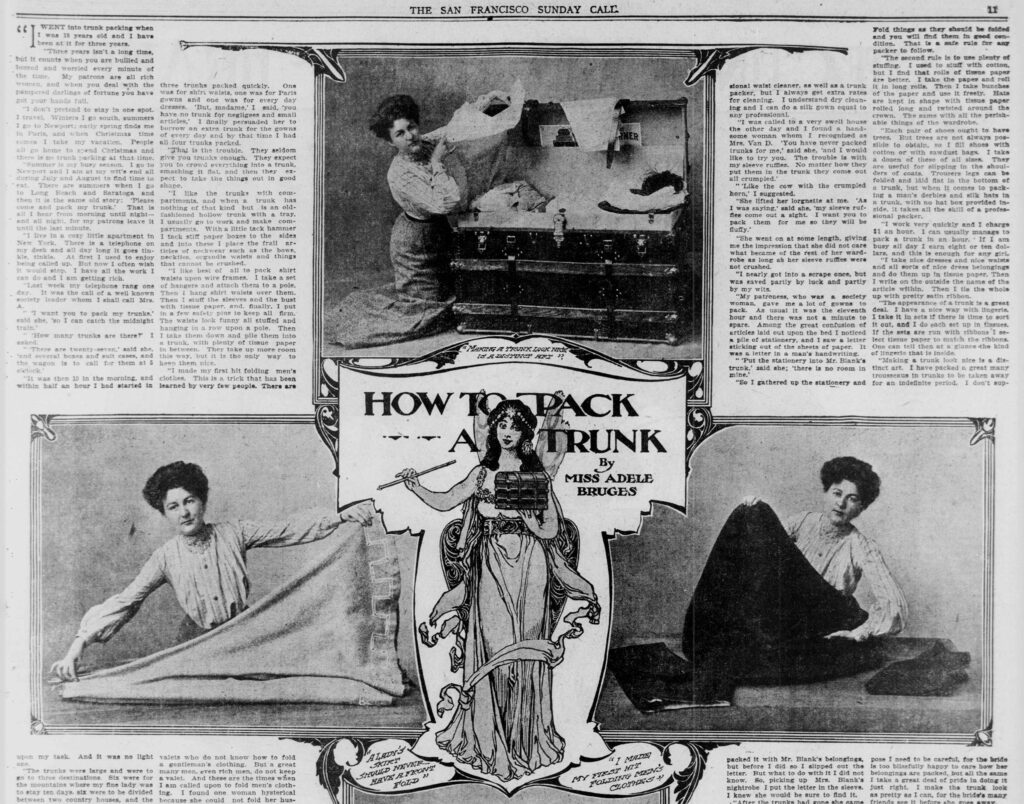
A few years after the Victorian era came to a close but I thought readers would enjoy it.
How to pack a suitcase (19th century style)
Getting started
“To pack a trunk neatly, everything should be laid out in readiness, folded and sorted, the light articles divided from the heavy ones, and a supply of towels and soft wrapping-paper at hand. Spread a thick, clean towel over the bottom of the trunk, and place upon it the hard, flat things, such as the portfolia, work-box, jewel-box, music-books, writing desk, and boxes; take care to fit them well together, as as to be level on top, filling in crevices wish such small articles as will not be injured by compressment, as stocking, towels, or flannels.”
–The Art of Dressing Well, 1870
Folding and packing clothing
“To fold a dress for packing, spread it, right side out, upon the bed and taking it by the hem, make the bottom exactly even all round. Next, double the skirt in half, lengthwise, and then in four, reversing the fourth fold. After this, turn up, crossways, about one-third of the folded lower part of the skirt, then give the remainder of the skirt a fold backward, terminating at the waist. Then turn the body backward, front uppermost, and the back resting on the folded skirt. Spread out the sleeves, give each a fold forward at the shoulder, and backward at the elbow, and lay them evenly across the body. Place the dress at the elbow, upon a large clean towel, and fold this smoothly over it before placing it in the trunk.”
—The Art of Dressing Well
I wonder how long it took a Victorian lady to pack!
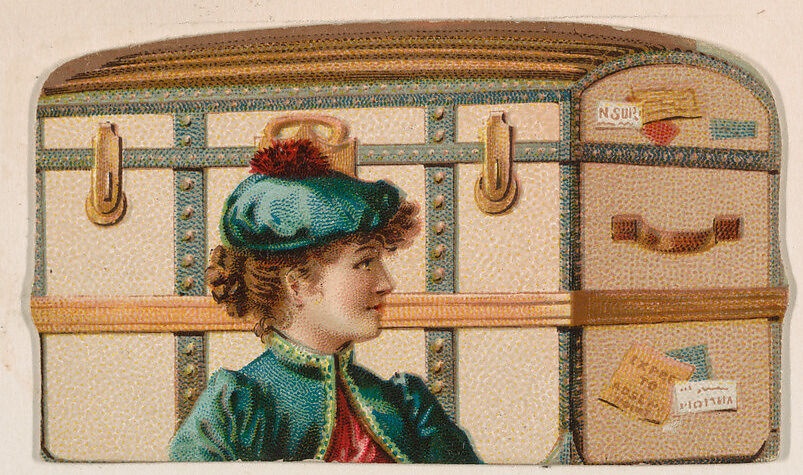
“Under-clothing of all kinds will look much better at the end of a journey if folded instead of rolled, and will pack quite easily.”
—The Art of Dressing Well
Read all about what a proper Victorian woman was advised to dress while traveling on our blog post “Victorian traveling dress: guidelines for a proper lady“
And for the vanity items
These were the days without plastic! Victorians had lovely glass and metal containers for their toiletries. I took a close look at these pretty trinkets in my post “Have luxury, will travel. 19th-century dressing cases.” Some had special boxes to store them all in, While others had to fit them in among their other items:
“Wrap all polished boxes in soft paper before packing, and guard the corners well from rubbing against each other. Never use newspapers in packing, as they will certainly ruin whatever clothing rubs against them.”
–The Art of Dressing Well

It definitely needed to be packed carefully!
And for all the other fashion must-haves:
“Collars and cuffs are important items. The effect of an entire toilet will be ruined by a soiled ot crumbles collar. They take so very little space in the trunk that there is really no excuse.”
– Mme. Demorest’s semi-annual what to wear and how to make it, 1878
“In packing shoes, it is best to have a shoe-bag, or two pieces of calico bound together and divided into pockets, each large enough to hold one show. Spread this flat over the bottom of the trunk, if there is room left by the flat, hard articles.”
-The Art of Dressing Well
“A bonnet will look better after a journey if the flowers or feathers are taken out and carried separately in a paper box, and the strings are smoothly rolled, not folded, upon pasteboard.”
–Mme. Demorest’s semi-annual what to wear and how to make it, 1878
Can you imagine having to take such care of a hat when traveling? Personally, I have a couple that I can fold up and just toss in on top!
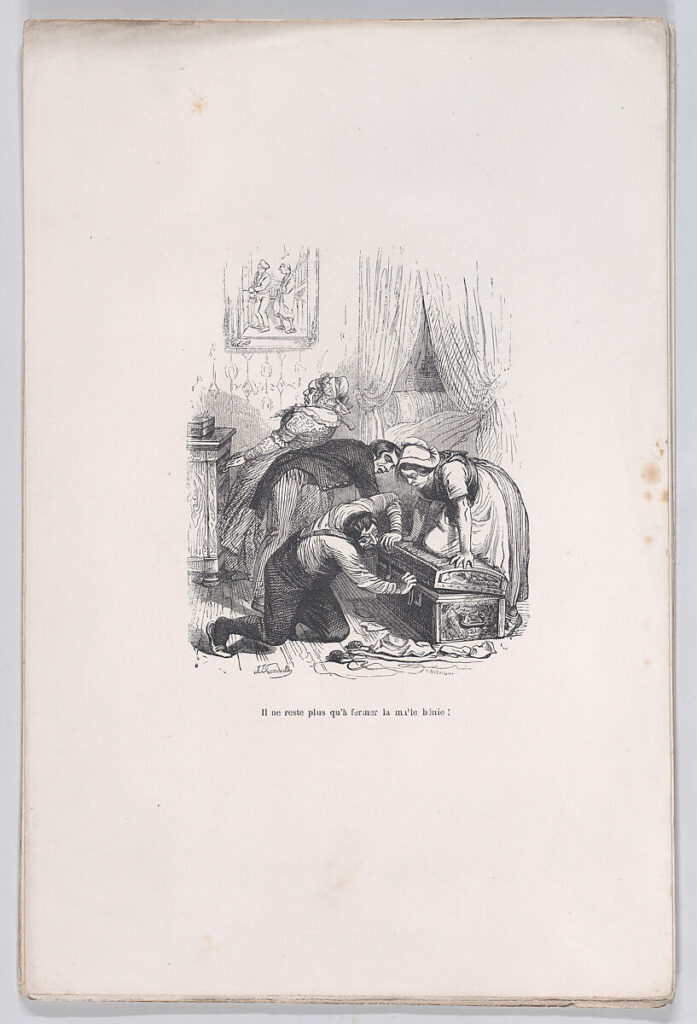
Pack light?
“Many people carry more than is necessary, and some, going to the other extreme, make themselves intensely uncomfortable by taking too little. Two trunks are necessary, one, the larger, to be filled with such things as you will not likely to need during the voyage, and which is to be sent down into the hold.
It is so arranged now, that at a certain time in the day, you are able to go down yourself with very little inconvenience, and the baggage steward will get your trunk into such a position that you can get out anything you want; but it is wise to avoid this if possible.”
–Mme. Demorest’s semi-annual what to wear and how to make it
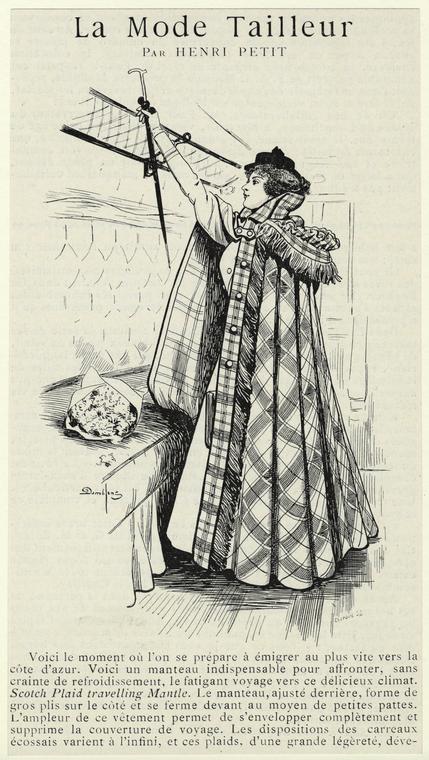
“Collars and cuffs are important items. The effect of an entire toilet will be ruined by a soiled or crumbled collar. They take so very little space in the trunk that there is really no excuse.”
– Mme. Demorest’s semi-annual what to wear and how to make it-1878
A new trend in trunks
When it comes to how to pack a suitcase I have one main rule: the bigger the suitcase, the better. Victorians felt the same. And just as wheeled suitcases caused a stir several years ago, they had their own trends.
I came across several references to the fact that in the late 19th century the style of trunks had changed from a rounded top to a flat one.
“While on the topic of trunks, it may be added that for American traveling, the “Monitor” trunk is the leading style…”
–Mme. Demorest’s semi-annual what to wear and how to make it-1878
(A “monitor” trunk was simply one with a flat top)
“The modern trunk has a flat top, and the round-topped trunk of only a few years ago now looks old-fashioned beside it. The flat-topped trunk stacks easier in a baggage car, it packs away better in a store-room and it makes a very good seat in a room in a summer hotel…”
Good Housekeeping, 1897
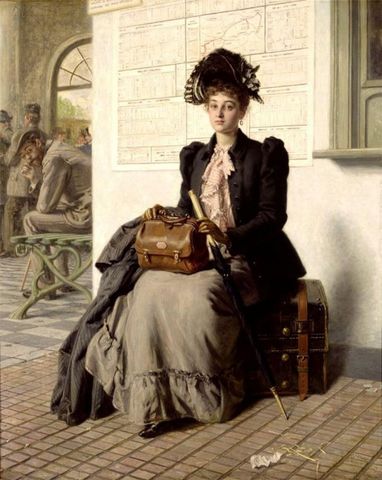
Says the Victoria & Albert Museum:
“Whereas early travelling trunks featured rounded-tops to encourage water run-off, Louis Vuitton is credited with introducing the innovative flat-topped trunk to the French market in 1858, an advancement only made possible by its unique water-tight design. This more convenient, stackable form of trunk bore all of Vuitton’s renowned quality, whilst remaining lightweight and sturdy. From this moment on, most travelling trunks utilised a flat-topped form. Matching the evolving demands of luggage necessitated by the late 19th century surge in cross-Atlantic voyaging, the flat-topped trunk made for easier loading and handling, and maximised capacity within the ship’s hold.”
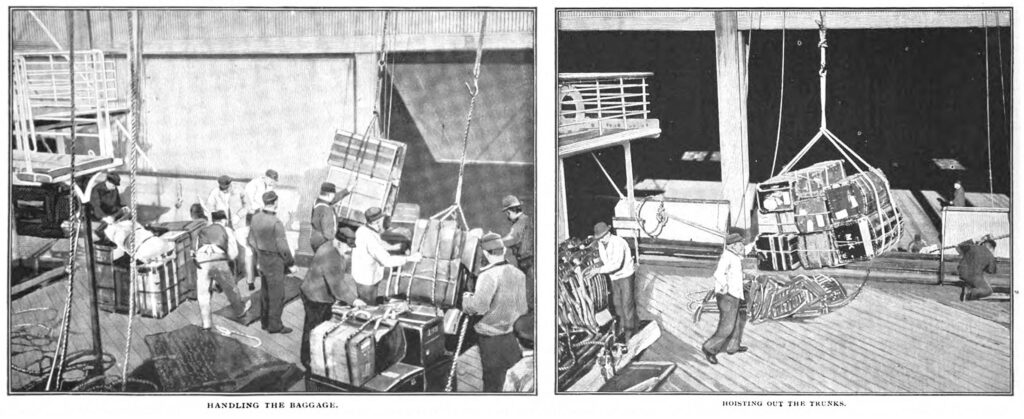
And no one should scrimp on such an important item:
“The Bazar advises its readers not to buy a cheap trunk, for an essential requisite to the enjoyment of a tour is the knowledge that the baggage is secure; and anxiety about a lady’s wardrobe has been known to detract even from the pleasures of a bridal tour.”
–Harper’s Bazaar, New York, July 25th 1868
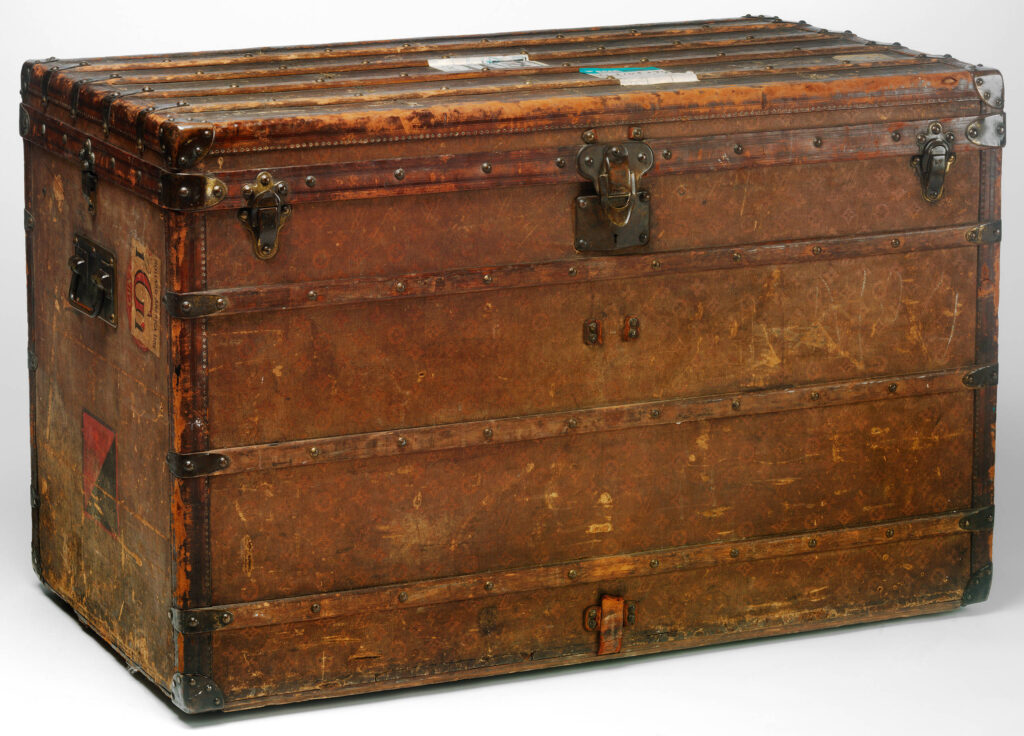
Image source: V&A Museum
Trunk as a tub?
And last but not least, if you thought a trunk was just for transporting one’s necessities, check out this tip from 1910’s Health and Beauty Hints:
“The habit of having a bath mat in one’s trunk when making a round of visits has been adopted by one woman, who finds that it is not always possible to have the use of a bathroom, and so, thanks to her mat, it not deprived of a daily and satisfactory bath.”
(Sadly, I couldn’t find an image to go along with this tidbit)
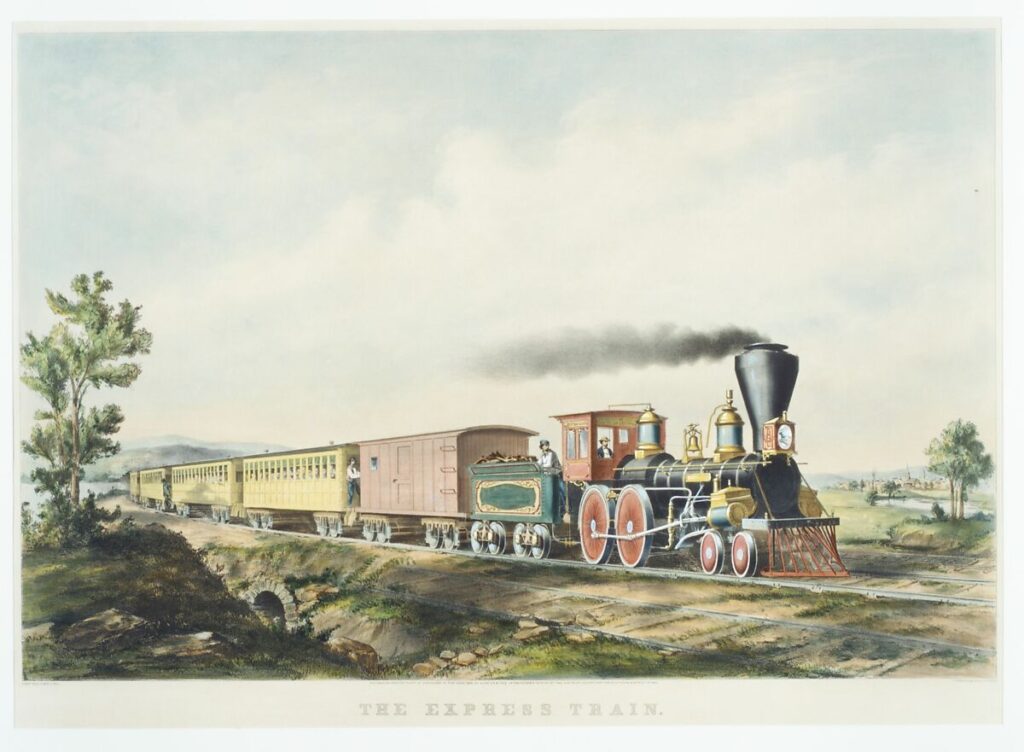

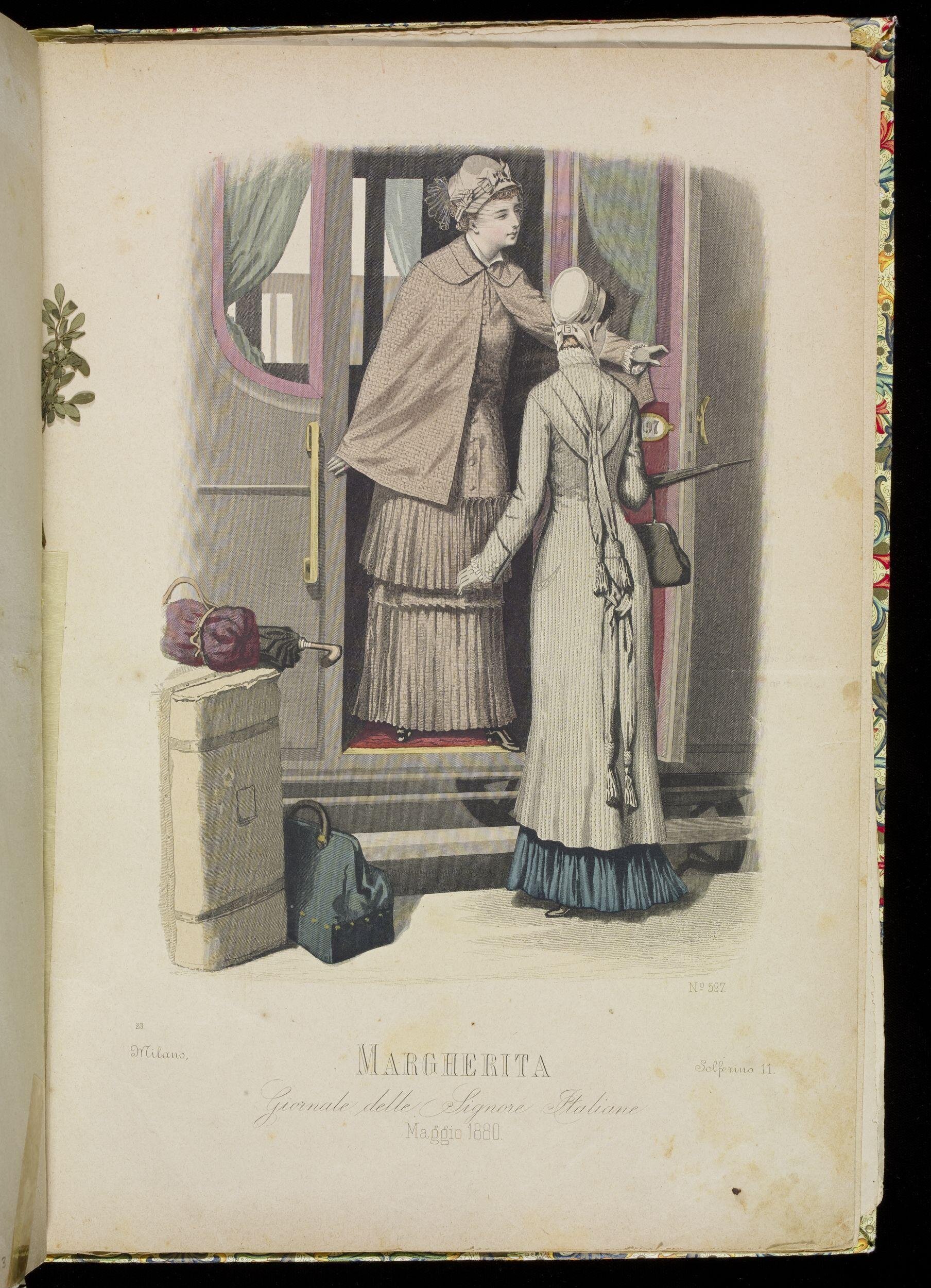




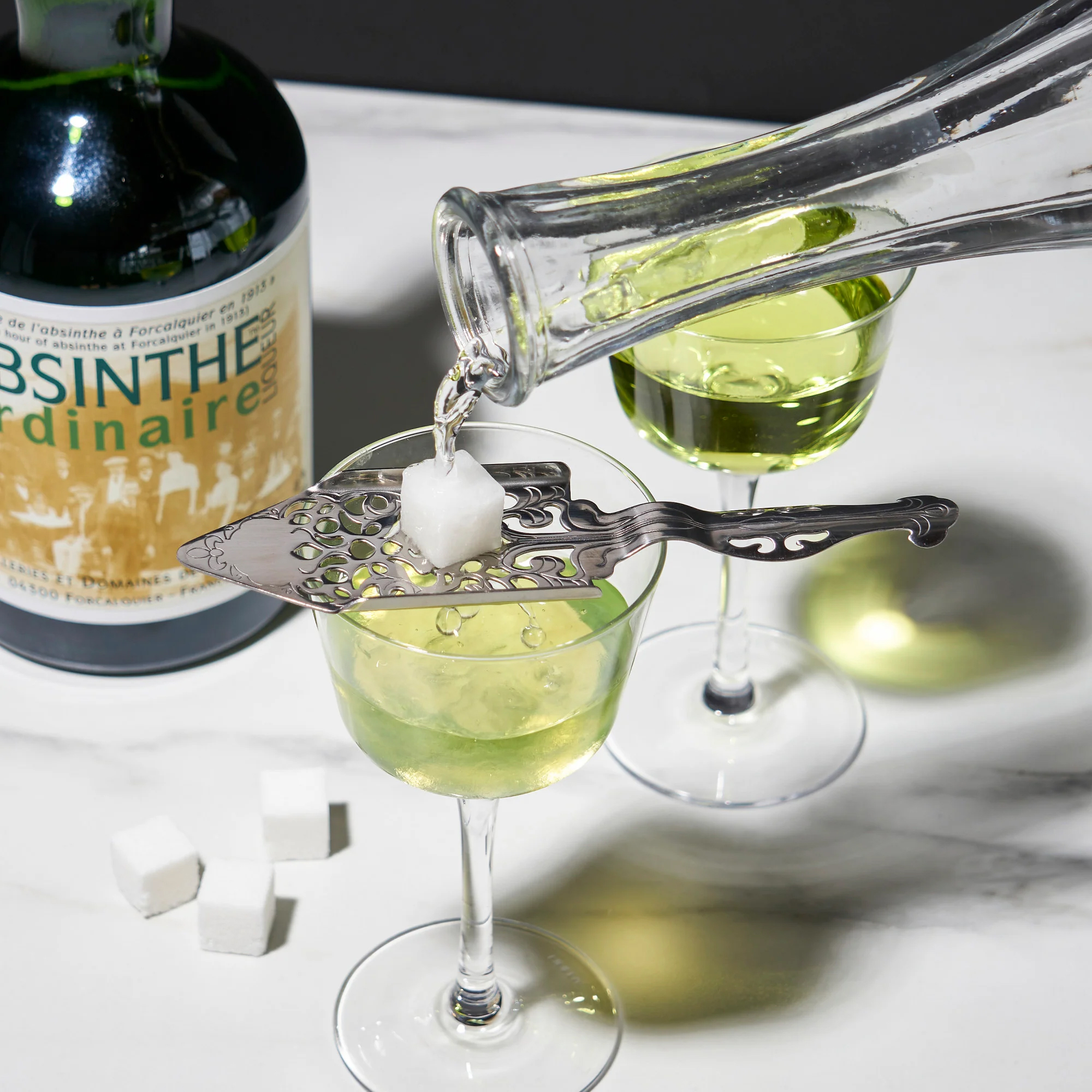







This was a fabulous read. The Victorian woman really knew how to pack but it probably took them hours to do so.
Some of the techniques I will try in my own packing and with my Victorian skirts from Recollections:
the bath mat is so that she can stand on it to catch drips, while she washes using an old-fashioned pitcher and bowl. More Stylish hotels would have running water, so sending for a pitcher of water would be unnecessary